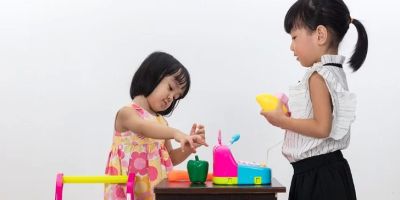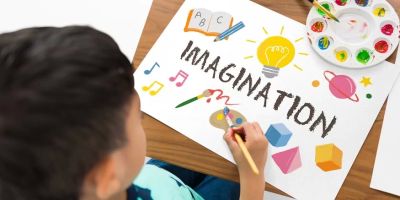Designing the Perfect Playroom: A Fun and Educational Space for Your Child
As a parent, creating a space where my child can play, learn, and grow has always been important to me. The playroom is more than just a room for toys; it’s a place where creativity, learning, and fun all come together. When I first set out to design a playroom for my child, I wanted it to be both fun and educational—something that would inspire my little one to explore, learn, and develop new skills while still having a blast. It’s amazing how much the right environment can impact your child’s development. In this article, I’ll share some practical tips and ideas on how to create a fun and educational playroom that will keep your child entertained and engaged for years to come.
1. Set Clear Goals for the Playroom
Before diving into the design process, it’s important to think about what you want the playroom to achieve. For me, the main goal was to create a space that would encourage both structured learning and free play. I didn’t want to simply fill the room with toys and expect my child to entertain themselves. Instead, I aimed to foster an environment where learning happened naturally through play. Whether it’s cognitive development through puzzles, creative thinking through art, or physical growth through active play, each corner of the room should have a purpose.
1.1 Consider Your Child’s Age and Interests
One of the first things I did was consider my child’s age and specific interests. Younger children benefit from sensory play, while older kids may enjoy games or activities that promote critical thinking. For example, when my child was younger, I incorporated a lot of bright colors, soft textures, and tactile toys. As they grew, I added elements that encouraged problem-solving and creativity, like building blocks, arts and crafts supplies, and books. Tailoring the space to your child’s developmental stage ensures that the playroom will remain engaging and stimulating as they grow.
2. Designate Zones for Different Activities
One of the things I’ve found most useful in designing a playroom is creating separate zones for different activities. This not only makes the space more organized but also gives your child a sense of structure. For example, you can create a reading nook, a craft area, a building block zone, and a place for physical activities. Each zone encourages a different type of play and can help your child develop a variety of skills.
2.1 The Reading Corner
One of the first zones I set up was a cozy reading corner. I included soft pillows, a small bookshelf filled with age-appropriate books, and a comfortable rug for sitting. This area became a quiet retreat where my child could immerse themselves in stories, expanding their vocabulary and imagination. I found that having a designated reading space encouraged a love for books early on, and it’s a great way to wind down at the end of the day.
2.2 Creative Play Space
A creative play space is essential for encouraging artistic expression. I added a small table with art supplies like crayons, markers, and paper, along with a few craft kits. This zone promotes fine motor skills, hand-eye coordination, and creativity. My child loved making drawings and crafts, and I noticed how much confidence they gained through their artistic projects. Whether it’s painting or simple coloring, having a dedicated space for art fosters self-expression.
2.3 Building and STEM Area
As your child grows, you may want to add a building or STEM (Science, Technology, Engineering, and Math) area. I introduced building blocks, magnetic tiles, and simple puzzles into a section of the room to stimulate problem-solving skills and creativity. These types of toys encourage logical thinking and help my child grasp the basics of structure and design. I also added toys that foster an interest in science, like simple machines or interactive toys that demonstrate cause and effect.
2.4 Physical Play Zone
Physical activity is crucial for children, so I created a small space for active play. Whether it’s a soft ball pit, a mini trampoline, or a climbing wall, having a dedicated area for movement allows your child to expend energy in a safe and fun way. This is essential for developing motor skills and promoting a healthy lifestyle. I also added an area for dance or movement games, encouraging my child to be active and have fun while moving to music.
3. Choose Educational and Fun Toys
When selecting toys for the playroom, I always prioritize items that are both fun and educational. I know that toys can serve as tools for learning if they encourage curiosity, problem-solving, and critical thinking. For example, I found that toys like building blocks, puzzles, and interactive learning games were great for developing cognitive skills. I also incorporated toys that stimulated creativity, like dress-up clothes, art supplies, and pretend play sets.
3.1 Focus on Quality, Not Quantity
One mistake I made early on was buying too many toys. I quickly realized that fewer, higher-quality toys actually provided more value and opportunities for learning. I focused on getting toys that served multiple purposes or could be used in different ways. For instance, building blocks could be used for stacking, sorting, or even pretending to build houses, which kept my child engaged for hours. I recommend choosing toys that can grow with your child, adapting to different stages of their development.
3.2 Invest in Interactive Learning Tools
Interactive toys are a great way to engage your child while teaching them new skills. I invested in educational toys like a Montessori-style toy set that helped with counting, color recognition, and motor skills. These toys not only provided fun but also created opportunities for learning and development. There are a variety of options available, from electronic learning games to tactile puzzles that help with problem-solving. I’ve noticed that these tools kept my child curious and excited about learning while still having fun.
4. Keep the Playroom Organized and Safe
Once I had everything in place, I realized that maintaining an organized and safe playroom was just as important as setting up the right activities. With so many toys and materials, it’s easy for things to become cluttered, which can overwhelm both you and your child. I found that using bins, baskets, and shelves helped keep everything organized and easily accessible. I also made sure the room was childproofed, with no sharp edges, choking hazards, or unsafe furniture.
4.1 Labeling Storage Bins
To keep the playroom organized, I used clear storage bins and labeled each one by category (e.g., “building blocks,” “art supplies,” or “books”). This not only helped with organization but also taught my child how to clean up after themselves. The act of sorting and labeling also became a fun learning activity, as my child began to recognize different shapes, colors, and even words. It’s a simple way to keep the room tidy while incorporating an educational element.
4.2 Safety First
Safety is paramount in any child’s playroom, so I made sure to double-check that all furniture was secured to the wall, cords were out of reach, and sharp objects were stored safely. I also ensured that any electronic toys were age-appropriate and that the room had plenty of space for my child to move around freely. Safety measures like these helped me create a space where my child could explore and play with peace of mind.
5. Let Your Child’s Imagination Run Wild
While having educational toys and activities is essential, I also made sure the playroom left room for my child’s imagination. I added some open-ended play items that allowed for creative expression. Simple items like cardboard boxes, dress-up clothes, or musical instruments encouraged my child to engage in imaginative play. I’ve seen firsthand how unstructured, imaginative play can spark creativity and help develop social skills. Whether it’s pretending to cook in a toy kitchen or acting out stories, giving your child the freedom to create their own adventures is an important part of their development.
Conclusion: The Perfect Playroom for Your Child’s Growth
Creating a fun and educational playroom for your child is an investment in their development, both mentally and physically. By incorporating a variety of activities, choosing educational toys, and designing a space that is safe and organized, you can provide your child with an environment that encourages learning, creativity, and fun. I’ve seen how a well-designed playroom can positively impact my child’s development, and I’m sure it will do the same for yours.
If you’re ready to design the perfect playroom for your child, I recommend visiting Knight Toys to find the best selection of toys, furniture, and playroom essentials to get started. With the right tools and ideas, you can create a playroom that’s both educational and a whole lot of fun!





